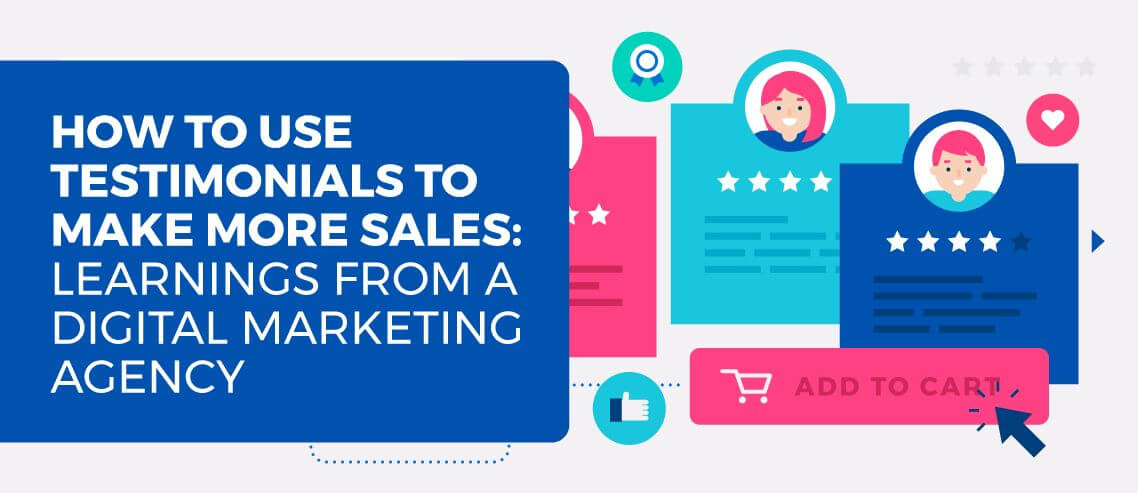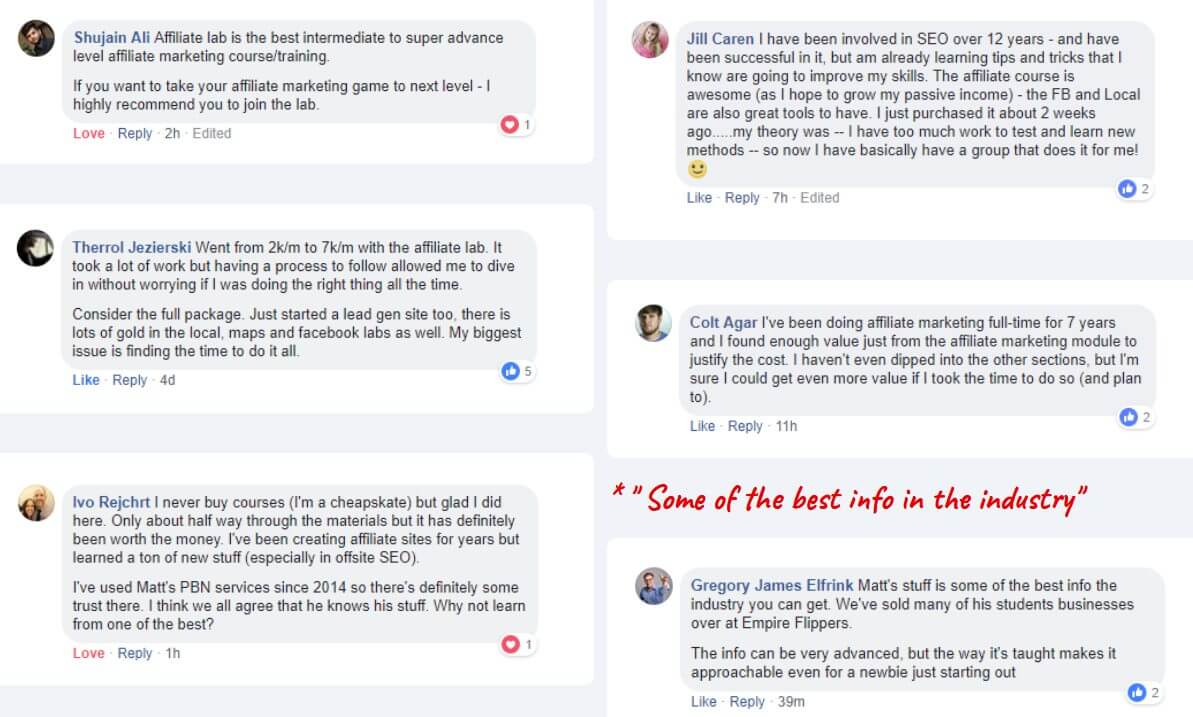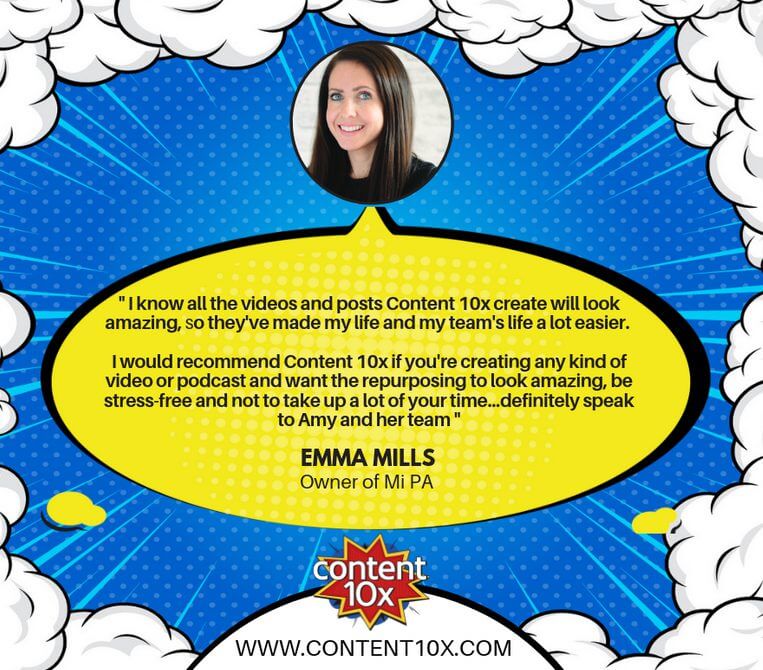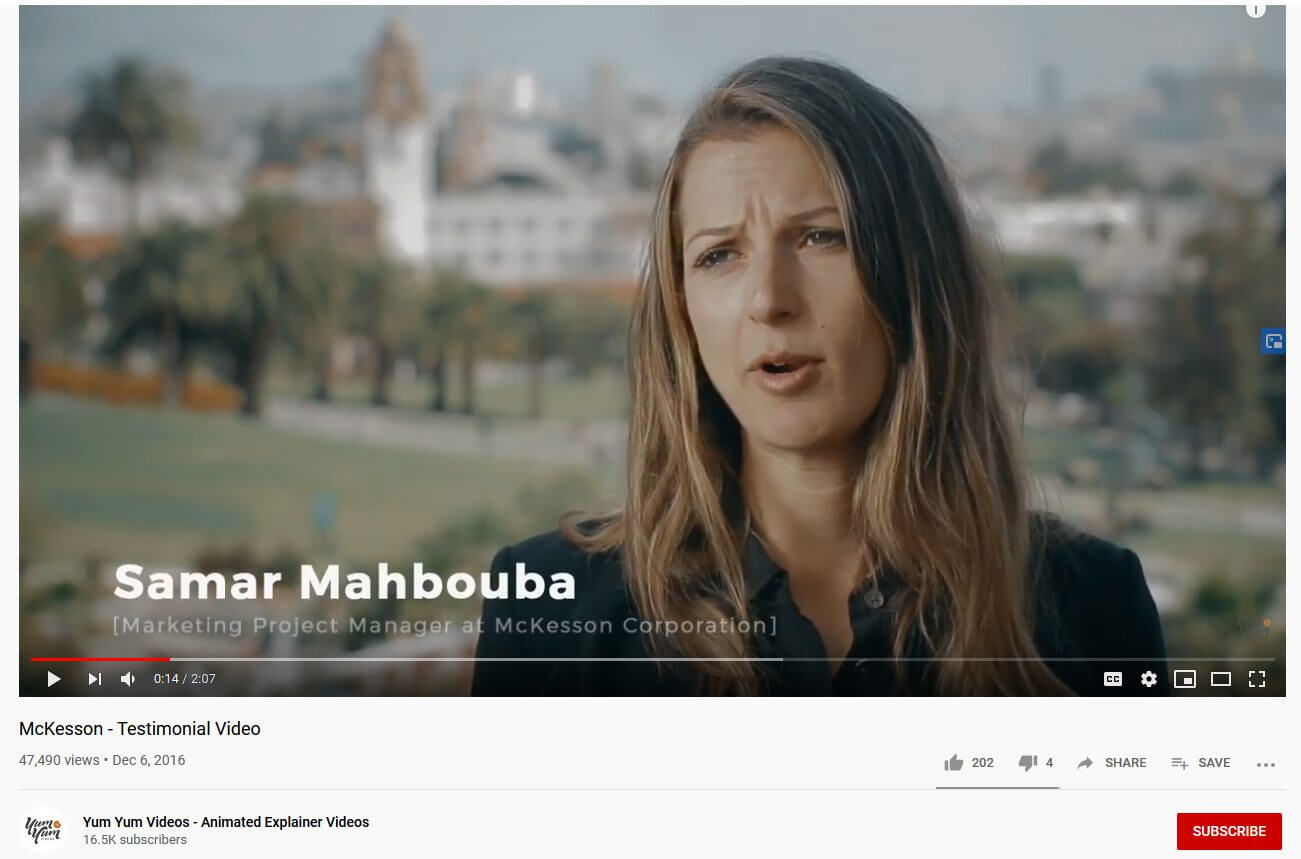How to Use Testimonials to Make More Sales: Learnings from a Digital Marketing Agency

Contents
Have you ever decided to make a purchase – or not – based on a review or testimonial you read online? If so, you’ll understand the significance of testimonials. The vast majority of consumers consult reviews or testimonials before buying, and positive feedback from previous customers can increase the level of trust they have in a business.
In other words, testimonials matter. If you’re not using them in your marketing strategy, you’re missing out on a major opportunity. In this piece, I’ll share with you some of the lessons I’ve learned about using testimonials in marketing, and how to use them to make more sales.
A testimonial is a statement from a satisfied customer, explaining why they like a product or service and the benefits they got from using it.
If you haven’t yet started gathering testimonials from your happy customers and clients, start requesting them now. Most people who have been satisfied with your product or service will be only too happy to take a few minutes to help you out, so don’t be shy about asking! You can send an email, make a phone call, put out a call on your social media channels, or use a simple survey or form.
I’ve learned a lot about using testimonials to generate sales over the years that I’ve worked in the digital marketing space. In this section, I’ll share some of the most valuable strategies I’ve picked up along the way.
Lesson 1: Display them prominently on your homepage & sales pages
Testimonials should be visible in a prominent location on your website’s homepage and sales pages. Why? Because you want them to be one of the first things a prospective customer sees when they land on your website.
Your homepage is likely to get more hits than any other page on your website. Therefore, it’s valuable space that you shouldn’t waste!
There are two main ways to display testimonials on your homepage: either choose one or two and display them statically, or utilize a scrolling testimonial carousel. Which you choose will depend on your website design and how many of those glowing testimonials you have!
Here’s how ArcTouch, a San Francisco company specializing in app development, does it:

Notice how the testimonial is prominently displayed in the center of the page.
The evidence is clear: testimonials have a direct impact on purchasing decisions. Testimonials on sales pages have been shown to increase conversions by up to 34%. That’s a lot of additional potential sales revenue that you might not be tapping into!
If you have a separate sales page, you must also include testimonials there. By the time they arrive at your sales page, the potential customer is a highly qualified lead and possibly ready to buy. Therefore, a glowing testimonial could be the last nudge they need to get them over the line and clicking that “buy now” button. If you’re seeing a high number of people visiting your sales page or even putting items in their cart but not completing their purchase, testimonials can boost your conversion rates.Here’s how ecommerce software provider 3dcart does it:

In both of the above examples, the companies use the client’s full name and company name to lend credibility to the testimonial (more on that later).
Lesson 2: Utilize landing pages with testimonials
A landing page is a static page for a particular campaign. A prospect might click a link on your social media channels, a marketing email, or a Google pay-per-click ad result, and be taken to your landing page. They’re used to get people to take one specific action such as joining your mailing list, registering for a webinar, or booking a consultation.
Your landing page is likely to be the first thing many of your new leads see. Therefore, it makes sense to display testimonials prominently. If they don’t know you or your business, your prospects do not yet trust you. Testimonials are a form of social proof, giving you credibility and building trust.

Above we have an example of a great landing page that utilizes testimonials from Freshteam. This is a pay-per-click (PPC) landing page. You can see that a testimonial is used directly above the Call To Action. The testimonial is meant to act as a final push to get people to click the sign up button.
Lesson 3: Use lots of testimonials for expensive products
Less is not necessarily more when it comes to testimonials! In fact, sometimes what might seem like an overload of testimonials can be effective.
Think about it this way: more testimonials means more happy customers, which adds more and more social proof. Would you be more likely to believe 20 people telling you a product is amazing as opposed to just one? Exactly.
A testimonial overload can be particularly effective for an expensive product or service. My Affiliate Lab program costs $997, so I have to prove to prospective participants that the investment is worth it. How do I do that? By stacking up the testimonials from happy former students:

Using screenshots of testimonials I’ve received on social media adds an extra layer of authenticity, giving site visitors confidence that the reviews are genuine.
Lesson 4: Include them in your sales pitches
If you pitch directly to customers, whether face-to-face, on the phone, or in writing, you should be using customer testimonials in your sales pitch.
When you’re including testimonials in a sales pitch, it’s essential to use one that is relevant to that particular prospect. For example, imagine you sell a piece of affiliate marketing software and you’re trying to pitch it to the owner of a small, local business. Don’t include a testimonial from a million-dollar corporation. Your prospective customer won’t be able to relate to that example. Instead, choose a testimonial from another small business owner. In other words, allow your prospect to see themselves in the success story.
Your prospective client is probably shopping around and may be weighing up the pros and cons of a number of products or solutions. A fantastic testimonial can be the deciding factor that makes them choose you over a competitor.
If you pitch to clients in person, include a testimonials slide in your presentation. If you write pitch documents, emails, or proposals, include a testimonials page. And if you pitch verbally without the aid of a presentation, such as over the telephone, keep a testimonial or two up your sleeve that you can quote at an appropriate moment.
Lesson 5: Include appropriate information
Wherever possible, you need to prove that your testimonials have come from a real person. In other words, that you haven’t just made them up! The simplest way to do this is to include the customer’s full name, headshot, and – if applicable – company and job title.
There are several good reasons to display your testimonials in this way:
- It lends credibility, showing that the testimonials are genuine.
- It allows prospective buyers to connect more easily with the story and to imagine themselves as that happy customer.
- In the instance of well-known industry figures or prestigious firms, associating those names with your company gives you added authority.
Here’s how London-based motion graphics designer Seni Soetan does it:

Of course, you must get your customers’ permission before you use their name or picture. But most will be only too happy to give you the go-ahead.
Lesson 6: Turn testimonials into visual and video content
According to Venngage, 71% of marketers say that visual content is a “very important” or “quite important” aspect of their marketing strategy. Therefore, if you are not yet utilizing visuals in your testimonials, I recommend you do so. Your testimonials should be presented in a visually appealing fashion and designed to draw the eye. Great ways to do this include using eye catching fonts, different colors, images, and larger text.
In addition, video content is a tremendously popular and still growing medium which has a consistently higher conversion rate than text alone. An astonishing 80% of marketers say that video has helped them to increase sales.
Why not make the most of the effectiveness of video content by repurposing your testimonials? You could ask customers to shoot short testimonial videos for you and show them on your social media or Youtube channel. You can even splice several together to create a testimonials montage.
One particularly great thing about video content is that you can share a lot of content in a short space of time. Think about how much information you can pack into a 30-second video. You’d struggle to replicate that in written copy without making it very long!
Here’s a fantastic example of a testimonial video created by Yum Yum Videos to promote its services:
One or more of your written testimonials could also be turned into an infographic. If you don’t have strong design skills, you can either hire someone to do it for you, or use a simple tool like Piktochart or Canva to help you. Infographics help people digest information more quickly and recall it more readily than if it were presented as text alone.

Above is a visual testimonial I love by content repurposing company Content 10x. The strong design and bright, bold colors make it eye catching, and the cartoonish quality gives the brand a fun and playful edge.
Conclusion
Testimonials from happy clients and customers are one of the most useful and impactful marketing tools you have at your disposal. If you’re not using them, you are most likely missing out on opportunities for more leads, more sales, and more revenue.
Therefore, if you don’t already have a collection of testimonials, start gathering them today. Reach out to those clients and customers who love your product or service. They’ll be happy to help you out by telling the world how fantastic your work is.
Once you’ve got those testimonials, you need to use them properly. Yes, they’re a great way to feel good about yourself and your business, but they’re also a marketing asset that you can’t afford not to use.
If you follow all the tips I’ve outlined for you in this article, you should soon start seeing the benefits. Social proof is powerful, so don’t be afraid to proactively seek it out and then leverage it to boost your business.
Here’s to more sales than ever!






